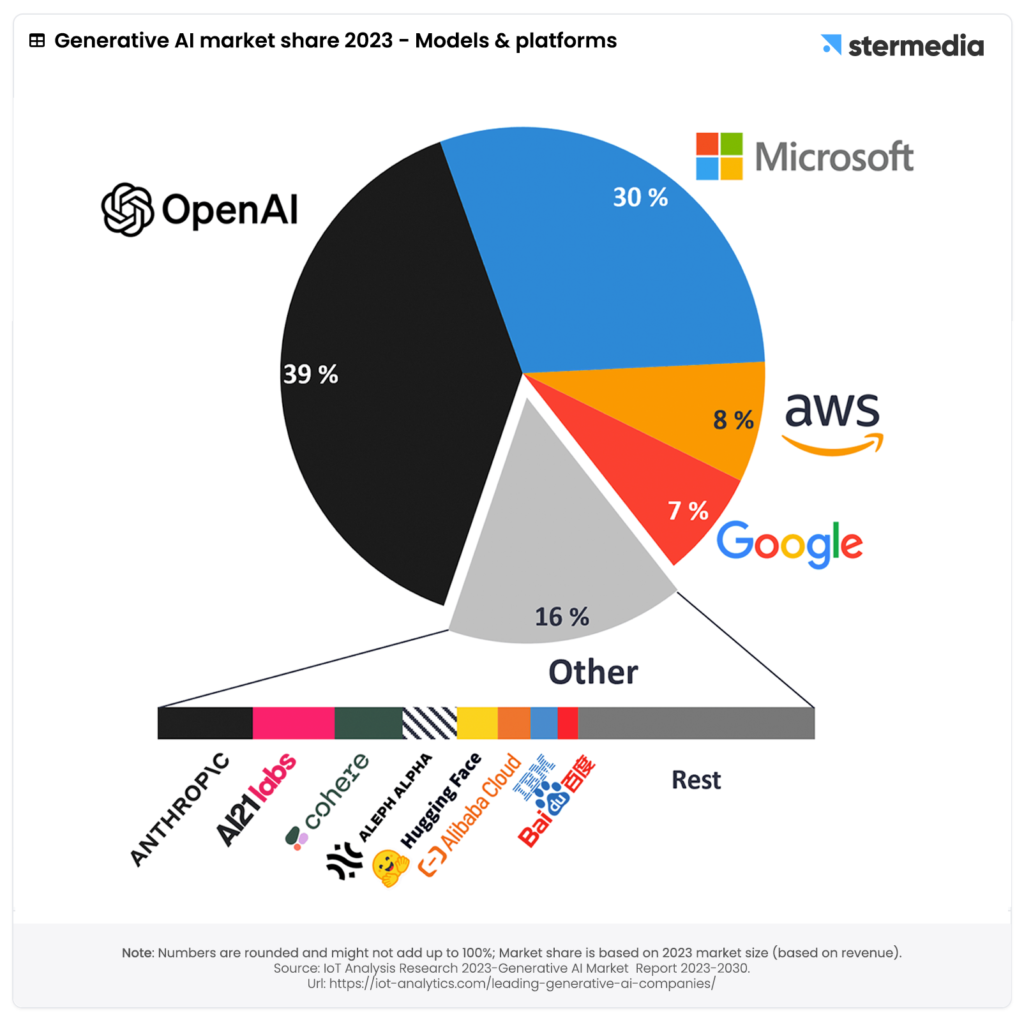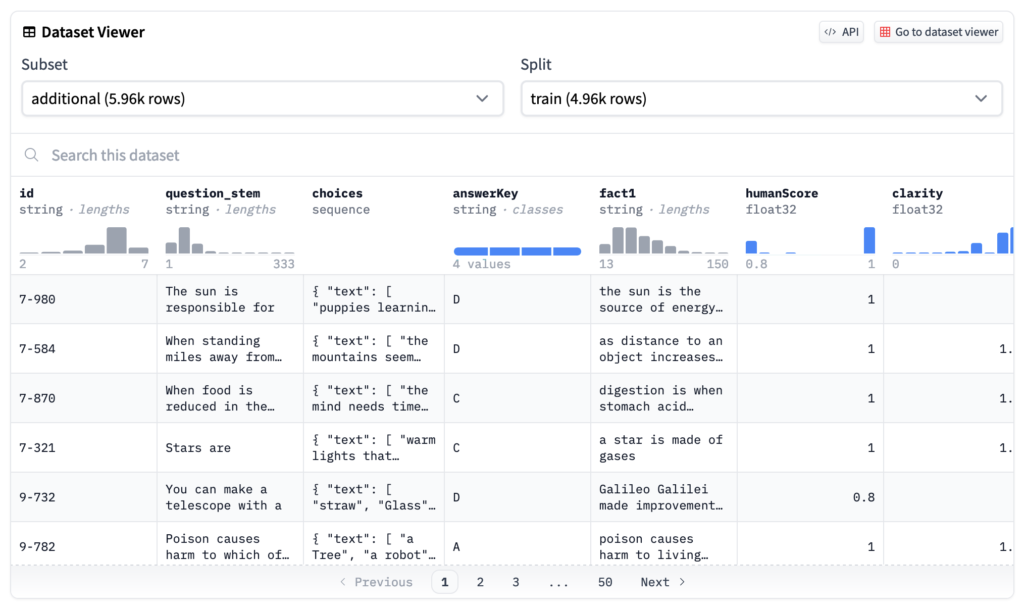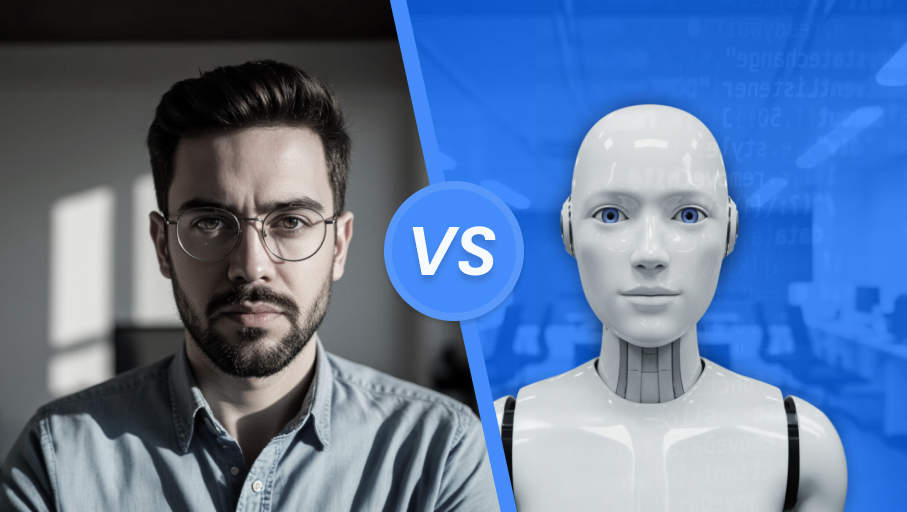1. Introduction – A Dynamic AI Market and New Players
The artificial intelligence (AI) market is currently undergoing dynamic changes. OpenAI, Anthropic, Google Gemini, and other companies have shaped the landscape of language models (LLMs) over the years. However, a new player has recently entered this ecosystem – DeepSeek, which has garnered significant attention, especially due to its performance and low operating costs.
Currently, OpenAI dominates the market with its GPT model, holding around 70% of the market share (including Microsoft, which holds a license for their model and implements it on its own infrastructure). Amazon, Google, Anthropic, and smaller players like Hugging Face or Alibaba Cloud make up the rest of the market. Despite this dominance, the emergence of DeepSeek opens up a new space for competition and could alter the balance of power.

2. The Arrival of DeepSeek – A Revolution in the Making?
DeepSeek offers solutions that require less computational power than competing models. This means companies can run it at a lower cost, challenging the existing business models of OpenAI and Google, which rely on high processing costs.
Marcin Wierzbicki, Chief Technology Officer at Stermedia, comments:

Marcin Wierzbicki
Stermedia CTO
From the perspective of AI-focused companies like Stermedia, the arrival of a new model is good news. We get another tool to test and the possibility of optimizing costs for our clients. DeepSeek allows for the installation of the model on our own infrastructure, which is crucial for some companies.
However, it is important to note that the resources needed to deploy the model are still out of reach for most companies. The most cost-effective approach will likely be using resources from third-party providers – for example, within the European Economic Area – to meet data security and personal data processing requirements.
It’s also worth noting that DeepSeek stands out not only for its performance but also for its implementation flexibility. The ability to install it on one’s own infrastructure means companies can have greater control over their data and optimize operational costs. This is an important factor, especially for organizations seeking an alternative to cloud solutions.
2. How should companies approach the changing AI market?
To effectively navigate the evolving AI market, companies must prioritize rigorous model evaluation rather than relying solely on the introduction of new technologies. Simply adopting the latest model does not guarantee success—real-world testing and performance analysis are essential. Businesses should assess models based on accuracy, response speed, and cost-effectiveness to ensure the best fit for their specific needs. With over 12 years of experience in AI, Stermedia has developed a structured approach to model selection, leveraging experiments, performance metrics, and comparative analysis to make data-driven decisions. This enables companies to choose AI solutions that optimize both efficiency and financial viability.
What Should Clients Look for When Choosing an AI Model Provider?
- Experience and Expertise – Implementing AI requires not only knowledge of the tools but also the ability to analyze and choose the best models. It’s important to choose providers with a rich portfolio and practical experience in AI implementation.
- Testing and Model Quality – Different AI models can yield different results depending on the application. Clients should ensure that their provider conducts benchmark tests and offers solutions tailored to their specific needs.
- Operational Costs and Scalability – AI models can generate high operational costs, especially when based on closed models like GPT. Providers should be able to advise on selecting the optimal model that balances quality and costs.
- Data Security – Ensuring data protection is crucial. The ability to install a model locally, as with DeepSeek, may be a significant factor for companies dealing with sensitive data.
- Trend Monitoring and Innovation – AI is evolving rapidly, and new models are emerging regularly. A good provider should continuously monitor the market and adapt their solutions to the latest industry developments.
The Importance of Model Testing & Custom Evaluation Metrics
Initially, most AI models were designed for general-purpose use, maximizing profitability for companies like OpenAI, Microsoft, and Google. However, selecting the right model for a specific business case is far more critical than relying on generic solutions.
Beyond standard scientific benchmarks, user experience plays a key role in evaluating model performance. Human scoring, which assesses the usability and effectiveness of AI-generated results, is essential. In some scenarios, additional metrics—such as clarity and ease of understanding—are needed. These evaluation criteria are typically developed in collaboration with engineering teams to ensure the best possible model selection.

Conclusion
The arrival of DeepSeek marks another step in the evolution of the AI market. Tech companies should approach this with openness and a willingness to experiment. As Marcin Wierzbicki emphasizes:
“The AI market will specialize, and companies must learn how to choose the best models for specific tasks. It’s not just about performance, but also about costs. Having knowledge and experience in testing models is becoming a crucial competence in the IT industry.”
Stermedia actively tracks these changes and adjusts its solutions to new trends. In the face of an increasing number of AI models, the biggest challenge for companies is learning to choose the right solution – and this is where we can help.



